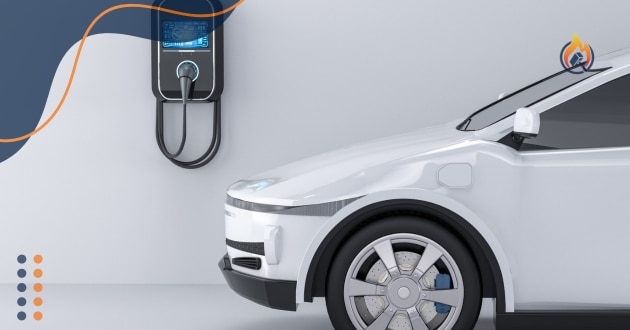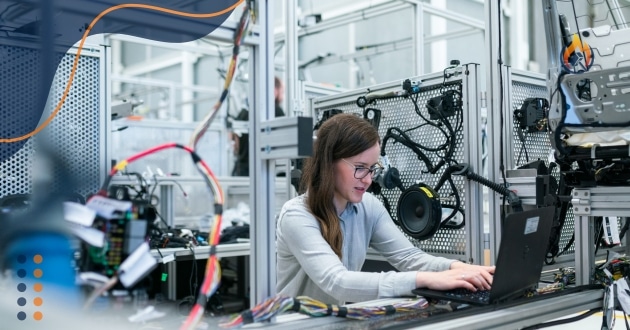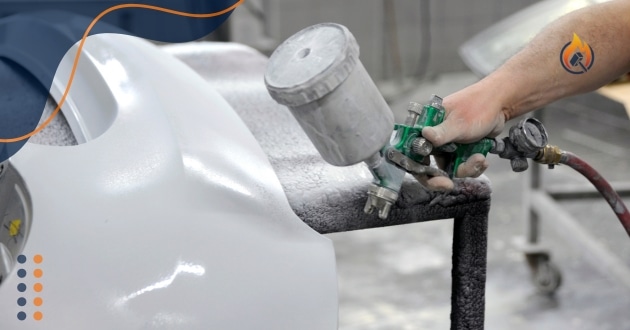Technology trends in the automotive industry are rapidly reshaping the way we perceive and interact with vehicles. From electrification to autonomous driving, innovations are driving the sector toward a future of sustainability and smarter transportation. These advancements are not only revolutionizing vehicle design but also redefining the driver experience, ensuring that cars are safer, more efficient, and environmentally friendly.
Moreover, technology trends in the automotive industry highlight how artificial intelligence, connectivity, and cutting-edge materials are converging to create a seamless driving ecosystem. For instance, features like real-time navigation, predictive maintenance alerts, and vehicle-to-everything (V2X) communication are becoming the norm. This integration of technology fosters not only convenience but also enhanced road safety.
Lastly, these technology trends in the automotive industry reflect a significant shift in consumer demand and industry priorities. As automakers invest heavily in research and development, partnerships with tech companies are accelerating breakthroughs. From electric vehicle (EV) innovation to autonomous solutions, the automotive landscape is undergoing a profound transformation.
The Rise of Electric Vehicles (EVs)

A Green Revolution in Motion
One of the most prominent technology trends in the automotive industry is the rise of electric vehicles. EVs are transforming transportation by reducing carbon emissions and reliance on fossil fuels. Governments worldwide are incentivizing EV adoption through tax credits, subsidies, and the expansion of charging infrastructure. For example, Canada’s Zero-Emission Vehicles Program has played a pivotal role in boosting EV sales across the nation.
The rapid evolution of technology trends in the automotive industry is not only transforming vehicles but also influencing economic landscapes globally. In Canada, this dynamic interplay is evident in the nation’s growing investments in sustainable transportation and cutting-edge manufacturing.
As highlighted in recent Economic News in Canada, the automotive sector is becoming a cornerstone for job creation and innovation. With initiatives supporting electric vehicle production and research into autonomous driving, Canada’s economy is leveraging these advancements to maintain its competitive edge while fostering a greener future. Such developments underscore the profound connection between technological innovation and economic progress.
Battery Technology Advancements

Additionally, advances in battery technology are pushing EVs to new heights. Lithium-ion batteries are becoming more efficient, offering extended range and faster charging times. Companies like Tesla and BYD are leading the charge by developing next-generation batteries that promise greater durability and reduced costs. These improvements are making EVs more accessible to a broader audience.
Autonomous Vehicles: The Future of Driving
How Self-Driving Cars Are Changing Roads
Autonomous vehicles (AVs) are another groundbreaking development in the automotive industry. Using artificial intelligence, sensors, and advanced algorithms, AVs can navigate without human intervention. This innovation has the potential to significantly reduce traffic accidents caused by human error, which accounts for 90% of road mishaps.
Real-World Applications:Technology Trends in the Automotive Industry
Companies like Waymo and Cruise have already launched self-driving taxi services in select cities, demonstrating the viability of AV technology. These vehicles use LIDAR and radar systems to detect obstacles, ensuring a safer and more efficient travel experience. Moreover, delivery services are leveraging autonomous trucks to streamline logistics and reduce costs.
Smart Cars and Connectivity: Technology Trends in the Automotive Industry
Creating a Connected Driving Experience
Smart cars are another critical aspect of technology trends in the automotive industry. By integrating Internet of Things (IoT) technology, vehicles can communicate with other devices, enhancing functionality and safety. For instance, features like live traffic updates, predictive maintenance alerts, and remote diagnostics are becoming standard in modern vehicles.
Vehicle-to-Everything (V2X) Communication: Technology Trends in the Automotive Industry
V2X communication is revolutionizing road safety by allowing vehicles to share information with each other and with infrastructure like traffic lights and road signs. This ensures smoother traffic flow, fewer accidents, and optimized energy consumption. Automakers like Ford and Audi are already incorporating V2X features in their latest models.
Insights from Industry Experts
Driving Innovation with Collaboration
According to Dr. Michael Harris, an automotive technology analyst, “The convergence of tech and auto industries is the driving force behind rapid innovation. Partnerships between automakers and tech firms like Google and Nvidia are setting the stage for unprecedented advancements in smart mobility.”
Case Study: Tesla’s Impact
Tesla has set a benchmark for integrating technology into automotive design. From their over-the-air software updates to advanced driver-assistance systems (ADAS), Tesla has proven how innovation can enhance user experience while prioritizing safety. Their Gigafactories also showcase how vertical integration accelerates production efficiency.
Additionally, while Tesla’s Gigafactories demonstrate the advantages of vertical integration, such a model demands significant capital investment and operational precision. Poor planning or over-expansion can lead to production bottlenecks, quality control issues, or financial strain. To mitigate these risks, companies should adopt phased scaling strategies, prioritize workforce training, and implement advanced quality assurance systems to ensure consistent output at every stage.
Finally, the reliance on ADAS brings another layer of responsibility. While these systems significantly reduce human error, they are not foolproof. Situations like sensor malfunctions or reliance on outdated mapping data can lead to accidents. Automakers should emphasize transparent communication with users, clarifying the limitations of these systems. Offering regular updates, rigorous testing protocols, and ongoing collaboration with regulatory bodies can further enhance their reliability.
Tesla’s journey underscores the transformative power of integrating technology into automotive design, but it also highlights the critical need for foresight, preparation, and proactive risk management. By learning from Tesla’s successes and challenges, other automakers can innovate responsibly, ensuring a balance between progress and safety.
The Role of Sustainability in Automotive Trends
Eco-Friendly Materials
Sustainability is becoming a cornerstone of automotive technology. Automakers are now using recycled materials for interiors, developing biodegradable components, and reducing waste in manufacturing processes. These eco-friendly initiatives not only appeal to environmentally conscious consumers but also align with global climate goals.
Moreover, efforts to minimize waste in manufacturing processes are gaining momentum. By implementing circular economy principles, manufacturers are reusing materials, optimizing resource consumption, and repurposing production waste. For instance, aluminum scraps from production lines are often melted down and reused, cutting both costs and emissions. This approach not only improves efficiency but also strengthens a company’s sustainability credentials.
These eco-friendly initiatives resonate strongly with environmentally conscious consumers who are actively seeking greener options in their purchasing decisions. Beyond consumer appeal, these efforts align with international climate goals, such as the Paris Agreement, encouraging the automotive industry to reduce greenhouse gas emissions. By integrating sustainability into every aspect of production, automakers are not only contributing to a healthier planet but also positioning themselves as leaders in the shift toward a greener future.
Renewable Energy Integration
Furthermore, renewable energy integration in production plants is gaining traction. Companies like BMW and Volvo are powering their factories with wind and solar energy, underscoring their commitment to sustainability. These efforts are helping reduce the carbon footprint of vehicle manufacturing.
Additionally, the integration of renewable energy helps stabilize operational costs by shielding manufacturers from fluctuations in energy prices. By investing in on-site solar panels and wind turbines, these companies are building resilient energy infrastructures that support long-term production goals. For example, Volvo has committed to achieving climate-neutral manufacturing by 2040, a move that showcases the industry’s shift toward greener operations.
Moreover, these renewable energy initiatives often extend beyond the factories themselves. Many manufacturers are working with their supply chain partners to adopt similar sustainable practices, creating a ripple effect throughout the industry.
For instance, partnerships with renewable energy providers ensure that even the raw materials used in vehicles are produced in eco-friendly environments, further minimizing the industry’s overall carbon footprint. This holistic approach to renewable energy integration is setting a new standard for sustainable manufacturing in the automotive sector.
Conclusion: Technology Trends in the Automotive Industry
From the electrification of vehicles to the rise of autonomous systems, these advancements are reshaping how we interact with cars. The integration of connectivity and sustainable practices ensures that the automotive sector remains innovative and forward-thinking.
By embracing these technologies, automakers, consumers, and governments alike can contribute to a more efficient and sustainable transportation ecosystem. As we navigate this era of rapid change, the potential for further innovation remains limitless, promising a future where technology and mobility harmoniously coexist.


